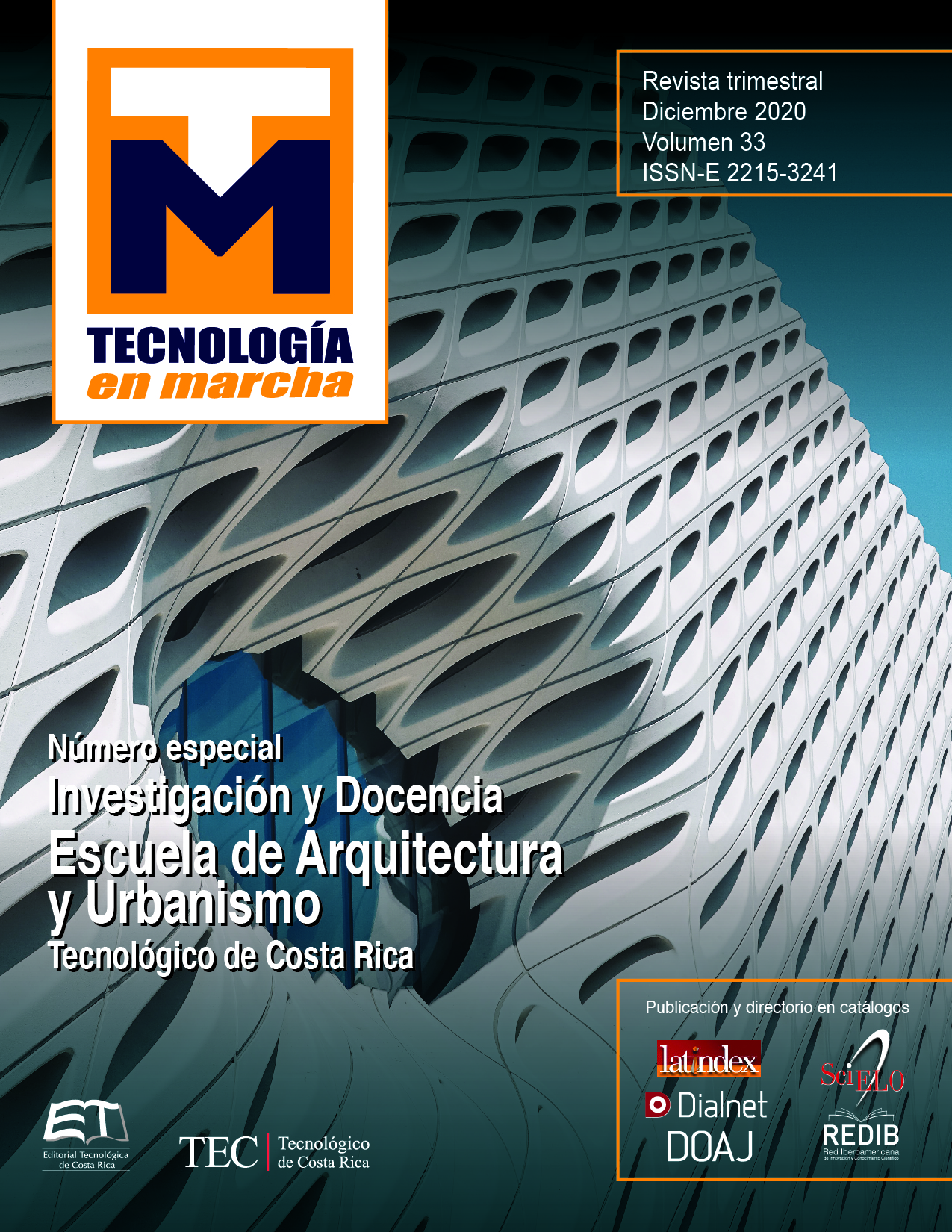The iterative and incremental model for the development of augmented reality application Amón_RA
Main Article Content
Abstract
This article presents the use of the iterative and incremental model (IIM) as a methodology for the development of an augmented reality mobile application for Barrio Amon, San José. The software developed for the processing and form of visualization of the information collected, constitutes a pioneering experience in Costa Rica, aimed at the enhancement and dissemination of the historical urban landscape, so it seeks to publicize this research and innovation from the university.
Methodologically, it began with a bibliographic review that allowed for the comparison of two software development models; a traditional one, called cascade model in comparison with the IIM based on iterations and with partial and functional software releases. The use of both methodologies was then compared in the context of the research project. As a final stage, the application of the methodology selected for the development of the Amón_RA mobile application was analysed.
Among the results, the advantages of using the IIM that prioritized its implementation stand out, for example: the simultaneous production of several modules, constant feedback of the functional aspects by the interdisciplinary team, the possibility of submitting the technologies selected for their development to evaluation processes in each of the increments released in the iterations, with the respective risk assessment and consideration of actions to mitigate their effects during the construction process.
It is concluded, based on the conditions of development of the research project, that the use of the IIM allowed a learning in each iteration, providing a product to the community according to their needs and generating in the research team a greater experience for decision making in future projects that use augmented reality.
Article Details

This work is licensed under a Creative Commons Attribution-NonCommercial-NoDerivatives 4.0 International License.
Los autores conservan los derechos de autor y ceden a la revista el derecho de la primera publicación y pueda editarlo, reproducirlo, distribuirlo, exhibirlo y comunicarlo en el país y en el extranjero mediante medios impresos y electrónicos. Asimismo, asumen el compromiso sobre cualquier litigio o reclamación relacionada con derechos de propiedad intelectual, exonerando de responsabilidad a la Editorial Tecnológica de Costa Rica. Además, se establece que los autores pueden realizar otros acuerdos contractuales independientes y adicionales para la distribución no exclusiva de la versión del artículo publicado en esta revista (p. ej., incluirlo en un repositorio institucional o publicarlo en un libro) siempre que indiquen claramente que el trabajo se publicó por primera vez en esta revista.
References
D. Porras & K. García, “Amón_RA: la utilización de TIC para revalorizar y dinamizar un barrio histórico de Costa Rica”, XIII CTV 2019 Proceedings: XIII International Conference on Virtual City and Territory: “Challenges and paradigms of the contemporary city”, UPC, Barcelona, October 2-4, 2019. Barcelona: CPSV, p. 8448, 2019. E-ISSN 2604-6512. DOI http://dx.doi.org/10.5821/ctv.8448
D. Porras & E. Ángulo, “La implementación de la realidad aumentada como valor agregado para la puesta en valor y difusión del paisaje urbano histórico”, I Simposio Internacional de Cultura. Exploración y puesta en valor, pp. 147-156, 2019. Available: https://www.oeicostarica.org/uploads/files/news/Oei/208/libro-simposiointernacional-de-cultura-exploracio-n-y-puesta-en-valor.pdf
R. T. Azuma, “A Survey of Augmented Reality”, Presence: Teleoperators & Virtual Environments, vol. 6, (4), pp. 355-385, 1997. Available: http://www.mitpressjournals.org/doi/abs/10.1162/pres.1997.6.4.355. DOI: 10.1162/ pres.1997.6.4.355.
L. Camargo, S. Sepúlveda & S. Castro, “Aplicación móvil de telemedicina para pacientes hipoglucémicos y diabéticos”, Respuestas, 2010. Available: https://www.openaire.eu/search/publication?articleId=doajarticles:: b89517c863e99a271bb4466a56a99ec3
I. Sommerville & M. Alfonso-Galipienso, “Ingeniería de Software”, 9th ed., México, Ciudad de México: Pearson Educación, S.A., 2011.
A. Alshamrani & A. Bahattab, “A Comparison Between Three SDLC Models Waterfall Model, Spiral Model, and Incremental/Iterative Model”, International Journal of Computer Science Issues (IJCSI), vol. 12, (1), pp. 106, 2015. Available: https://search.proquest.com/docview/1660801422
C. Larman & V. R. Basili, “Iterative and incremental developments. a brief history”, Mc, vol. 36, (6), pp. 47-56, 2003. Available: https://ieeexplore.ieee.org/document/1204375. DOI: 10.1109/MC.2003.1204375.
UNESCO, “Recomendación sobre el paisaje urbano histórico”, 2011. Available: http://portal.unesco.org/es/ ev.php-URL_ID=48857&URL_DO=DO_TOPIC&URL_SETION=201.html.
A. A. Aguileta & O. S. Gómez, “Estudio de calidad y eficiencia de un enfoque de desarrollo software secuencial con programadores solos y en pareja”, Ingeniare. Revista chilena de ingeniería, vol. 27, (2), pp. 304-318, 2019. Available: https://scielo.conicyt.cl/scielo.php?pid=S0718-33052019000200304&script=sci_arttext
R. S. Pressman., “Software Engineering: A Practitioner’s Approach”, 7th ed., New York: Editorial McGraw-Hill, 2010.

